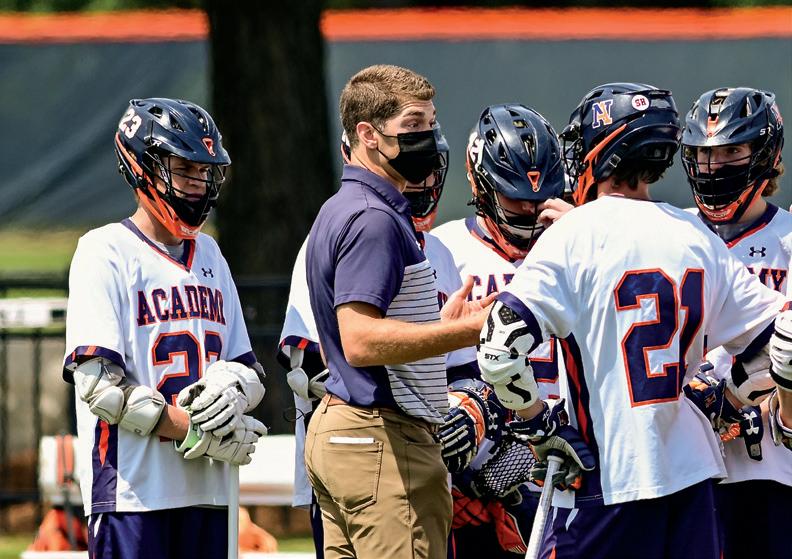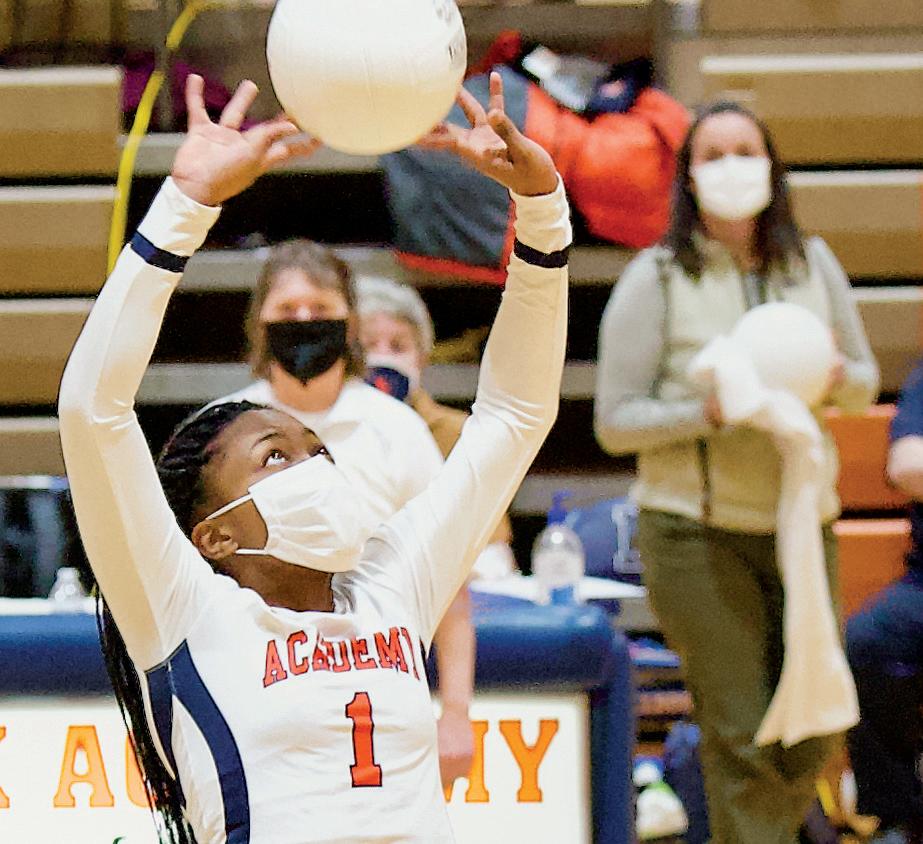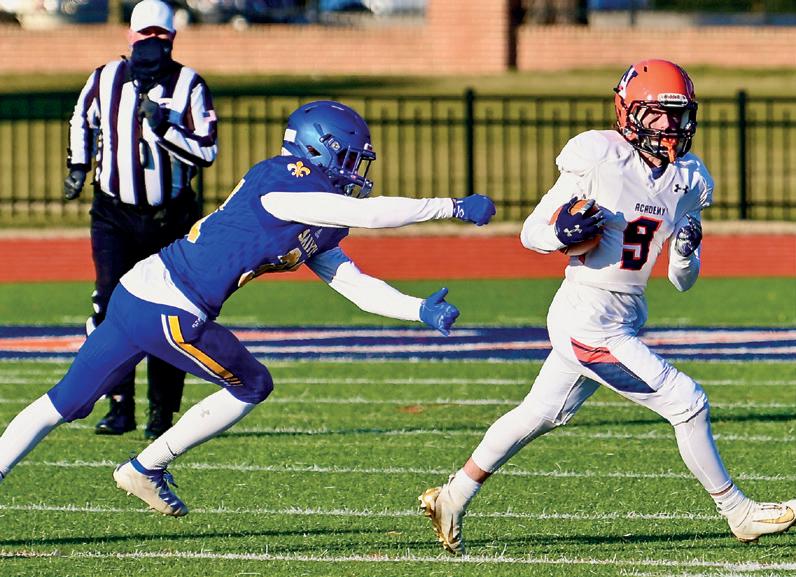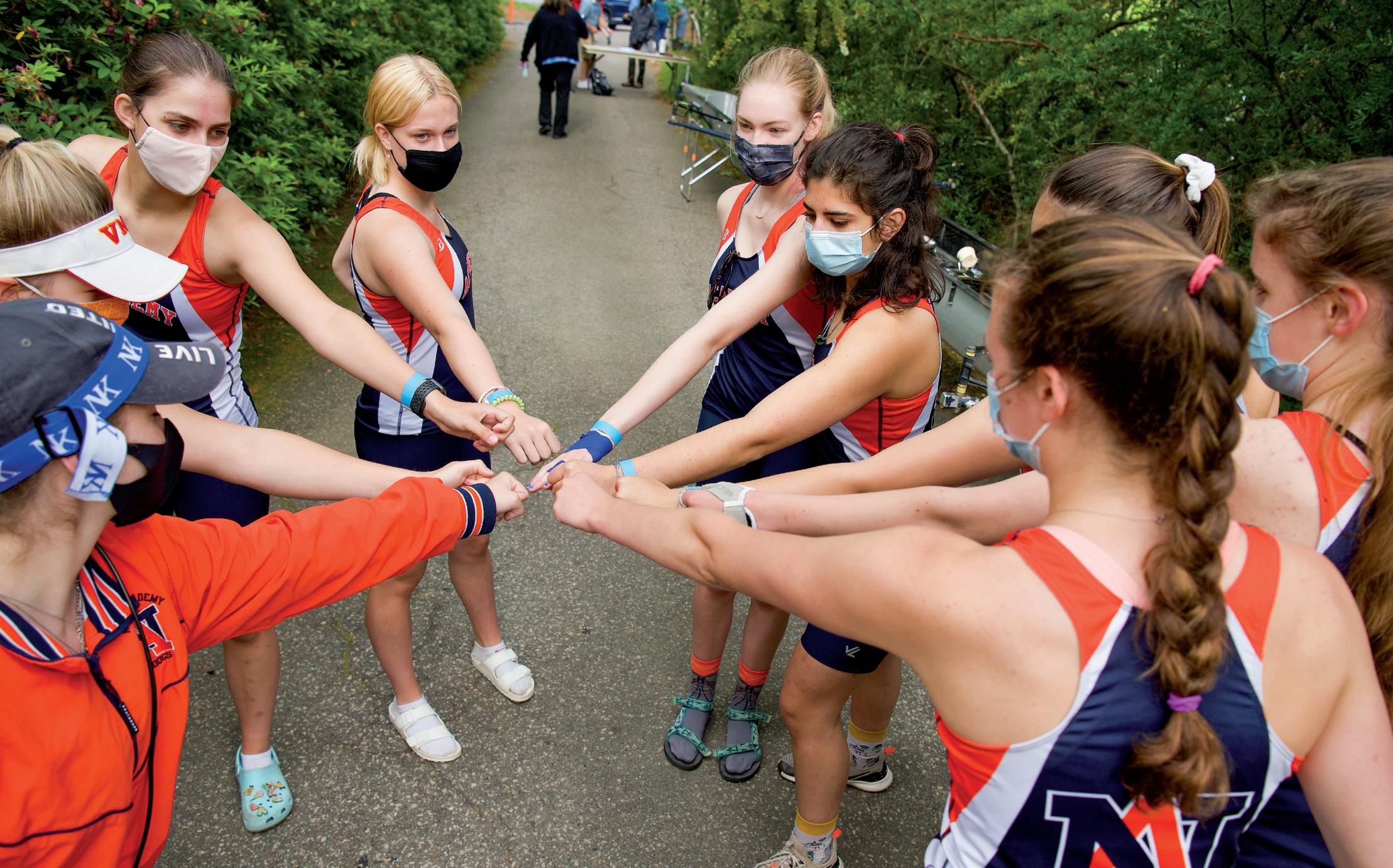
4 minute read
IN THE GAME


Masks, Training Camps & Go Bulldogs!
ATHLETICS COMPETITION PROVIDES A RETURN TO NORMALCY
As temperatures dipped and snow fell last winter, Norfolk Academy Football Coach Steve Monninger noticed a boost in morale around campus. The mood around the halls was brighter, the conversations had more pep. After about nine months, athletics — specifically athletics competitions — were back. “At a time when teenagers needed to have a sense of belonging, friendships, smiles, laughter, we got it,” Monninger said. “It was a weight that was lifted off the students, a release to be able to wear the blue and orange.”
Academy’s return to athletics competitions was a long and winding road, one that involved countless hours of meetings and planning among school and athletics leadership and a task force that included medical experts. It also required support from the entire school community. “I’m really proud of how we’ve handled this, from our students to our parents to our coaches to our administration,” Director of Athletics Chad Byler said.
The road back started shortly before classes resumed on campus, with a summer exercise program in WynneDarden Stadium. Upwards of 40 studentathletes typically arrived on campus for each hour-long session. Among the safety measures: They had to register online at least one day in advance; conduct a thorough self-screening and state they had no Covid-19 symptoms; park in assigned spots; have their temperatures checked before they exited cars; clean and wash their hands before walking onto the field; stay 15 feet apart at all times; and wear masks before and after workouts and during breaks.
In a typical year, fall teams are competing about the same time classes begin. But in the Year of Covid, the Tidewater Conference of Independent Schools, of which Academy is a member, postponed all athletics for the first few months of the year. The TCIS also shortened seasons, with winter sports running from November into January, flanked by about two months each of fall and spring sports.
To prepare student-athletes, the Academy Athletics Department created “training camps.” During these sessions, teams practiced together for a few weeks, wearing masks and keeping social distances apart. Organizing such practices was not easy. Katie Roberts, head rowing coach, had about 60 student-athletes for her camp. Since typical training for competition was impossible with social distancing, she turned her focus to fitness — burpees, push-ups, and rowing on machines that were well spaced out on the outdoor basketball courts. The necessary adjustment turned out to be a blessing in disguise, allowing her to sharpen her focus on the health, safety, and well-being of her student-athletes. “It caused me to take a step back and consider what is really important,” Roberts said.
Once training camps ended, winter regular seasons began. While some schools around the state took an aggressive
approach, jumping right into full competition, and others canceled sports altogether, Academy’s approach fell in the middle. Student-athletes and coaches were still required to wear masks while practicing. And the emphasis was on intramurals rather than interscholastic competition. That approach proved both popular and successful. Student-athletes enjoyed competing against schoolmates and there was almost no evidence that the virus spread during the season, even with student-athletes being Covid-19 tested as often as once a week.
Given those results, Academy expanded its fall offerings. Many teams still played intramurals, but there was more interscholastic competition. The success continued — again there were few indications that sports spread the virus, and NA teams won more than 80 percent of their games.
The spring season was run almost as normal, with teams playing a full slate of games and advancing into postseason play. “We’ve tried to adjust to what the virus has given us,” Byler said. He heaped praise on many members of the school community who devoted time and energy throughout the year. Many school staff members volunteered to monitor locker rooms to make sure protocols were followed, and check in the limited number of spectators allowed to attend games.
In addition, Head Athletic Trainer Antoinette Bailey and Athletic Trainer Joe Ingraham faced a major challenge. In a normal year, their room can be a hub of social activity, as student-athletes with bumps and bruises visit to say hello and get the medical help they need. Such activity requires closeness and contact. As a result, Bailey and Ingraham needed to be extra careful, constantly washing their hands and keeping their room and equipment clean. They also had to check up on student-athletes who stopped coming by because they were understandably concerned about social distancing. Bailey said she reached out more to such students and took added time to observe them from afar.
That required a lot of extra effort, but it was worthwhile. Bailey points to the varsity football team’s first game — a Saturday afternoon win over Nansemond-Suffolk on February 20 that was in fact the first varsity football game in the state of Virginia in 2021 — as encapsulating the joy this year brought. “That day was so uplifting, the joy of watching kids compete again and the reminder for adults of how much we love what we do.” ◆
Mike Connors is Digital News and Social Media Specialist.
OPPOSITE PAGE, TOP TO BOTTOM: Coach Ryan Tucker guided the varsity boys lacrosse team to the TCIS championship in spring 2021; Sierra Gilliard ’21 sets up the ball during the fall 2020 season; Lee ’22 evades a tackle. BELOW: Rowers, wearing their masks, bond together as a team.











